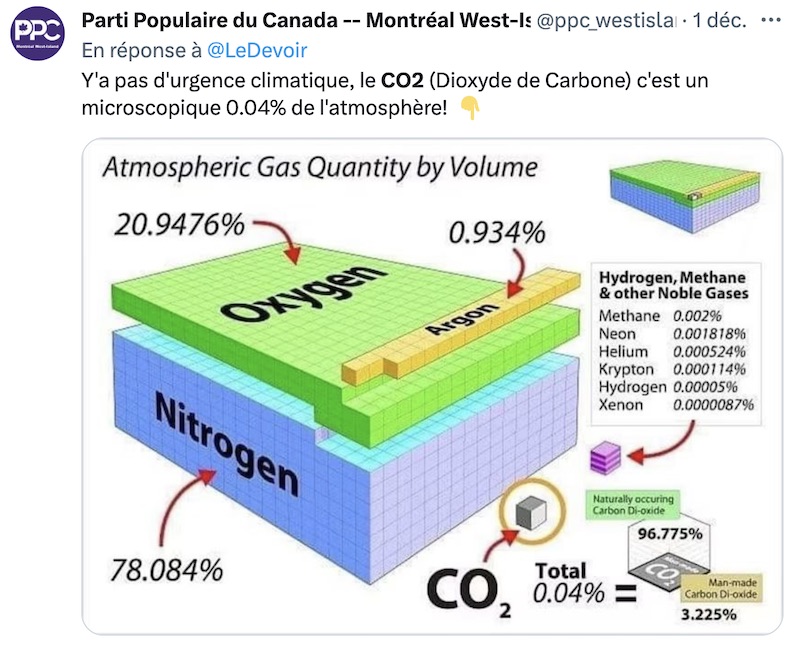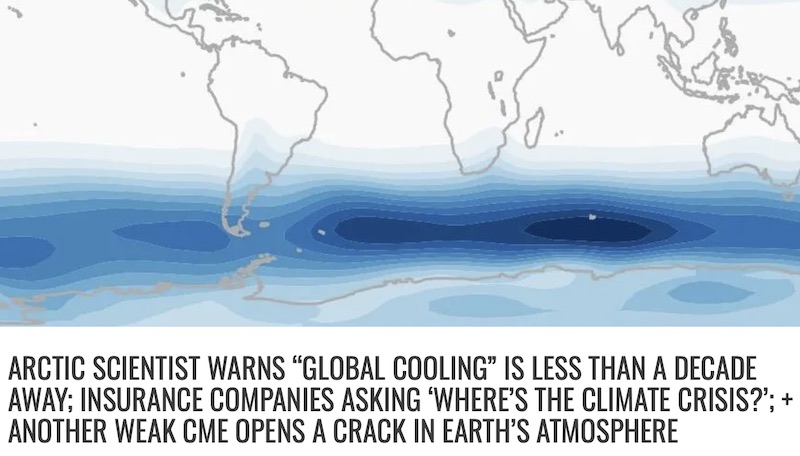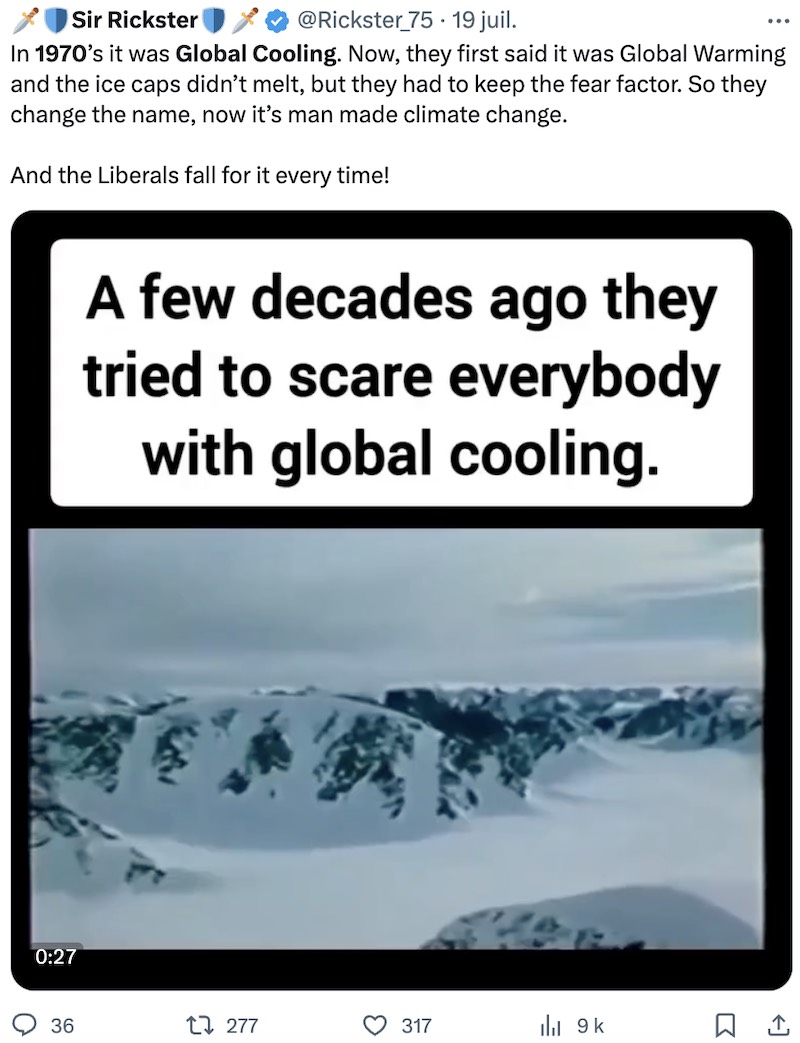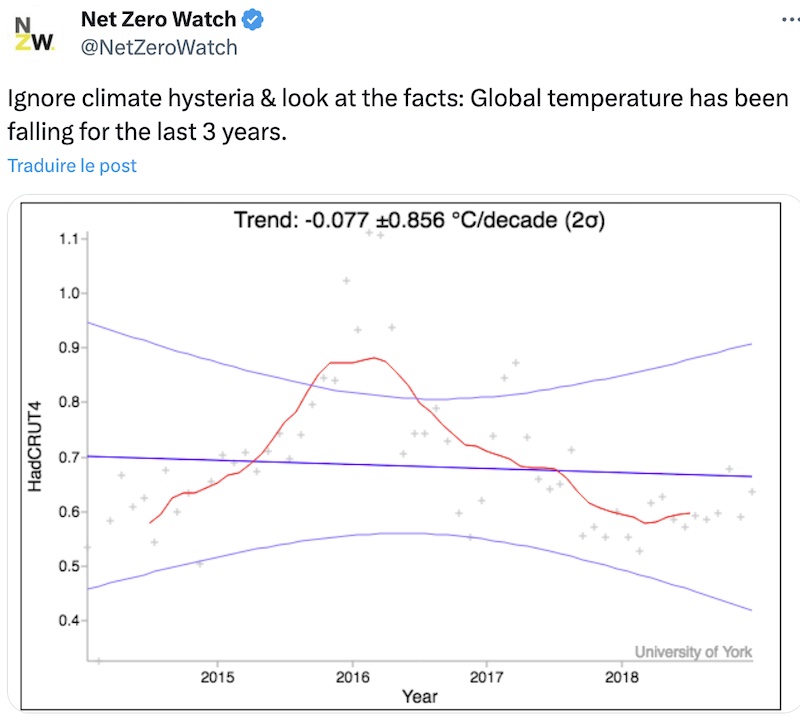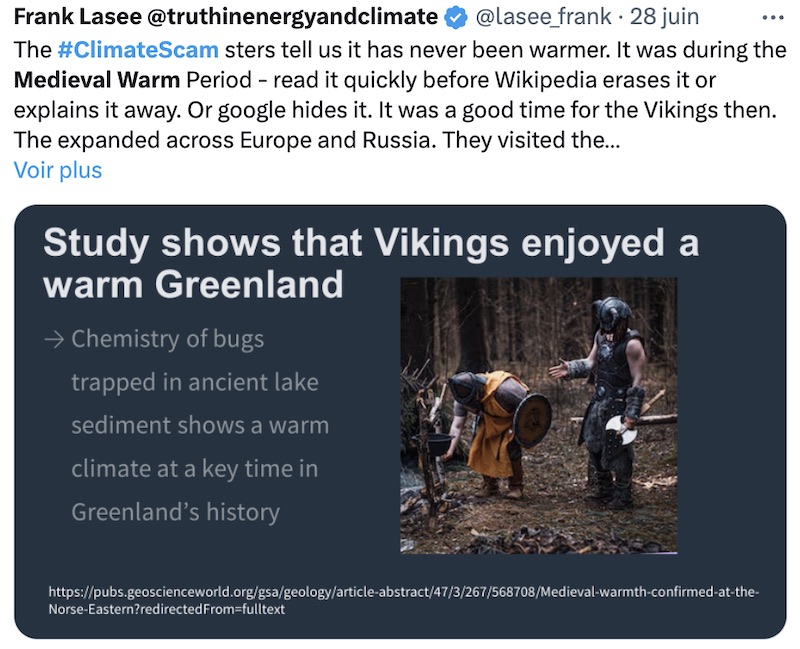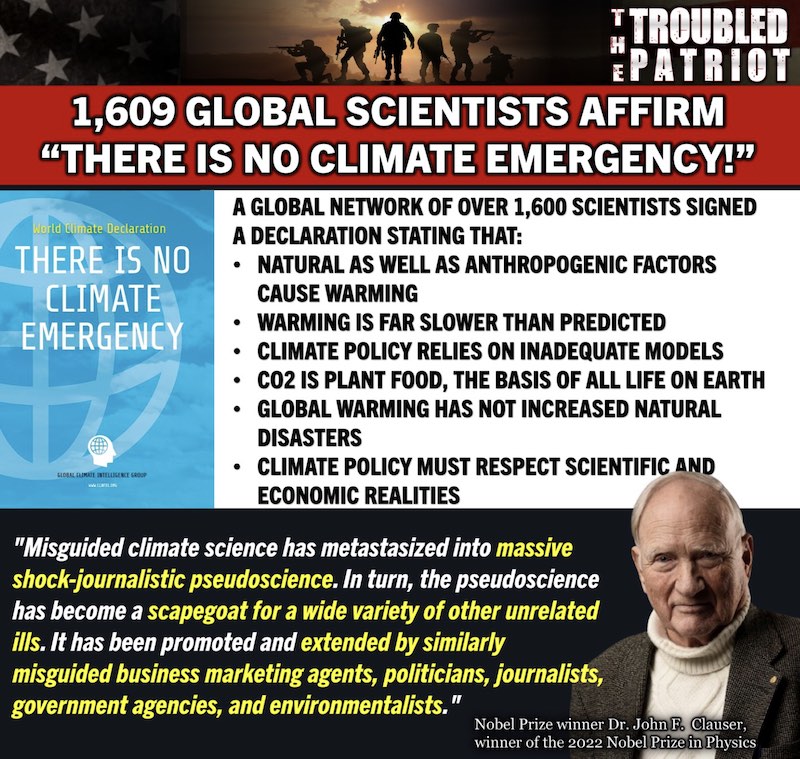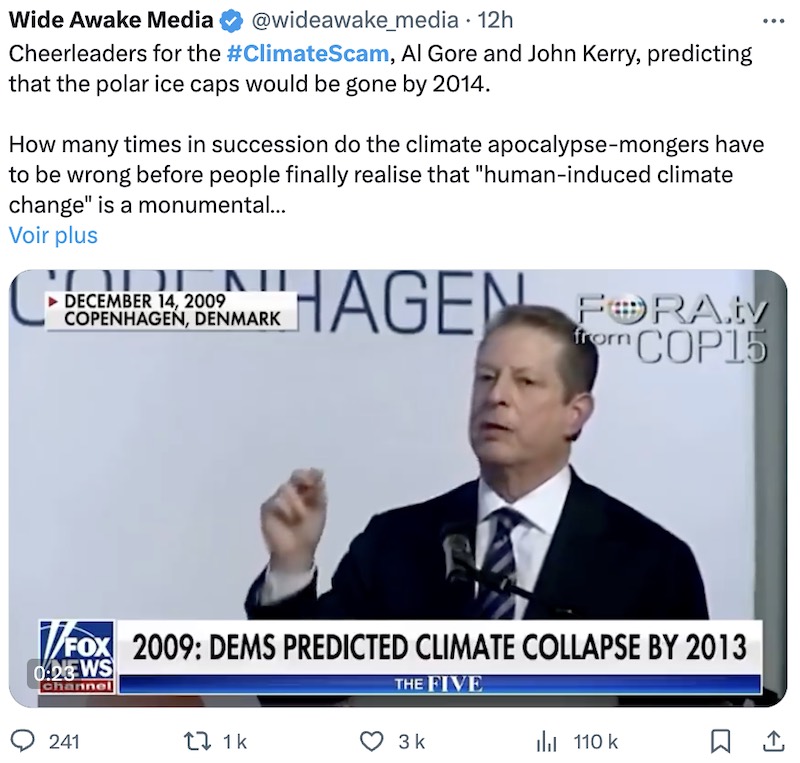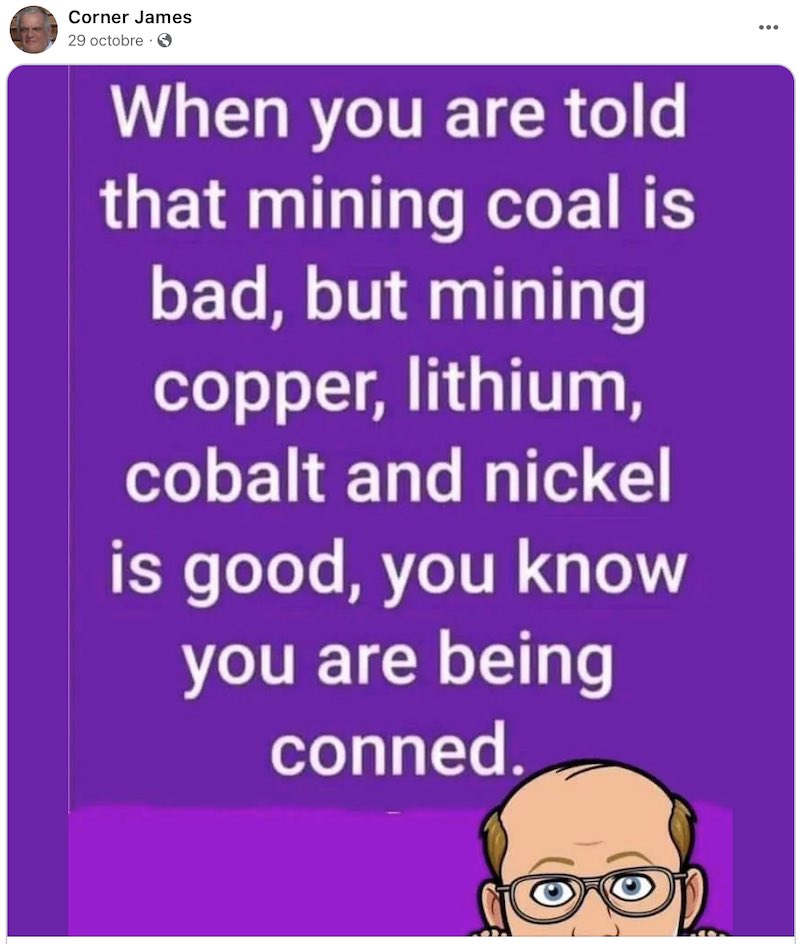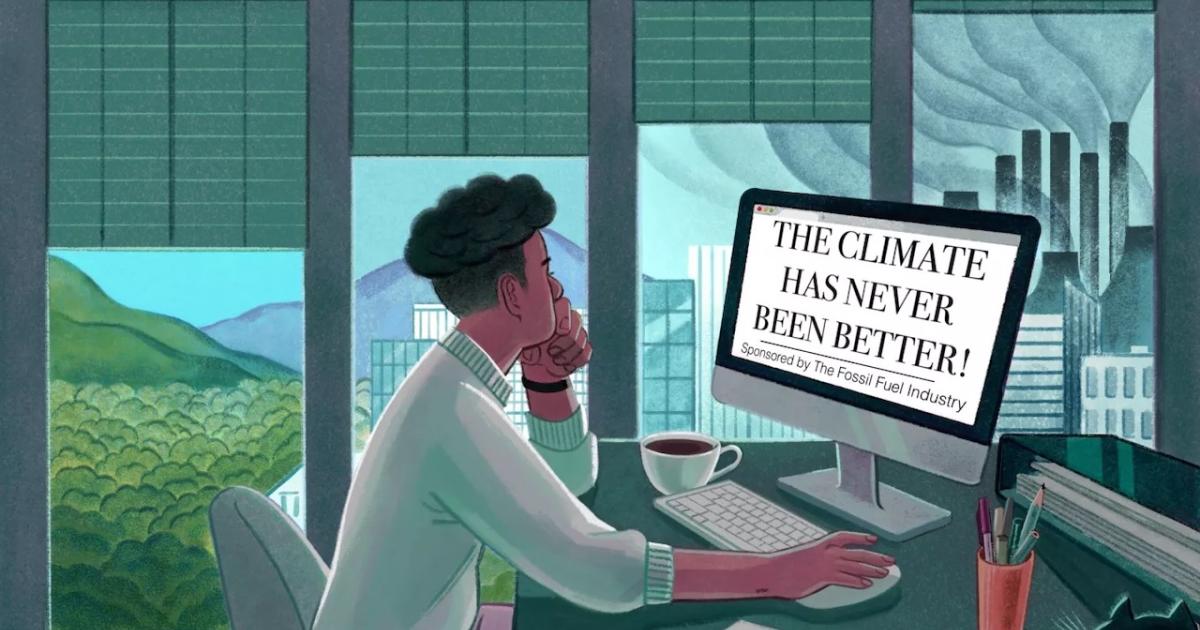
Climate misinformation: 4 ways to spot it
1- Affirmations that open an open door
These are claims that claim to have discovered “negligence” or “error” in climate science, when in fact these claims have been part of climate science for decades. For example, “The Earth has been warming and cooling for billions of years” (which no one has ever denied), “CO2 is only a small part of the atmosphere” (which has never been denied), etc. that.
These arguments are so frequent that 16 years ago, a site was called out Skeptical science He counted dozens of them. They refer to the concepts or facts that form the basis of knowledge about climate, oceans or atmosphere.
2- False statements
Subscribe to our newsletter!
So you don’t miss any scientific news and know all about our efforts to fight fake news and misinformation!
Part of this second category of assertions shared by climate skeptics takes the form of accusations: “Climate scientists have never wanted to study climate.” [insérer ici l’item préféré] » Or “Climate scientists refuse to answer relevant questions.” [idem] “.
For example, the role of the Sun in global warming, the hypothesis of an impending ice age, or the “failures” of climate models could have been hidden. However, all these questions have been duly examined on numerous occasions. And so on, Solar cycle variations Do not show no relation ship with Heating From the last century, the impending ice age is a myth that resurfaces at irregular intervals, with weather patterns dating back to the 1970s and 1980s. He predicted well What would happen, considering the limits of computer technology at the time.
We can also put in this category the false accusation “In the 1970s, scientists predicted cooling.” This rumor is mainly based on newspaper articles (a short article from the magazine Newsweek “Published in 1975” Cooling world “, often cited). While in fact, in terms of scientific research, compilation Implemented in 2008 To solve this question, I revealed that between 1965 and 1979, 44 out of 71 studies predicted rising temperatures, 20 were neutral, and 7 predicted a slight drop in temperatures. Circular blog Real climate He also spread this false rumour From 2005.
Finally, the falsehood often takes the form of graphs that claim to “prove” that global warming does not exist. Most of the time, the source is not mentioned, or it is a chart showing very carefully chosen dates (in English, this is called Cherry picking: We only keep data that is appropriate for us).
3- Misleading statements
The claim may not be false, but it is misleading. For example, “It was warmer in Greenland when the Vikings arrived there in the year 1000” is true, but the claim that this invalidates the intensity of current warming is incorrect: it is global, whereas the warming that occurred in the year 1000 was only In the northern hemisphereAnd also, Only partially to This hemisphere.
By the same token, “We’re having a hard time predicting the weather next week” is true, but claiming that this invalidates the ability to predict the temperature 100 years from now is misleading: climate science is not about predicting what the weather will be like on Christmas Day in the year 2123; But the average temperature of the planet at the beginning of the 22nd century compared to today – as well as trying to predict what consequences this will have on average storms, heatwaves or droughts.
4- Statements based on lack of knowledge of scientific information
This last category may be difficult to discover for those who are not familiar with the way scientific knowledge is built bit by bit. But some basic concepts are accessible to everyone, e.g Rumor detector :
- Disturbing policy choices can also confuse information and opinions: for example, it is natural to be concerned about pollution from exploiting the minerals that electric cars will need, such as lithium. It is also natural that we are shocked by the large number of private planes traveling to attend the climate conference. These are societal discussions that need to be had, but they in no way invalidate the scientific reality of climate change. We can hear about this Strong emotions: the first symptom of pollution Or read scientific studies: this is the basis of it.

“Organizer. Social media geek. General communicator. Bacon scholar. Proud pop culture trailblazer.”

